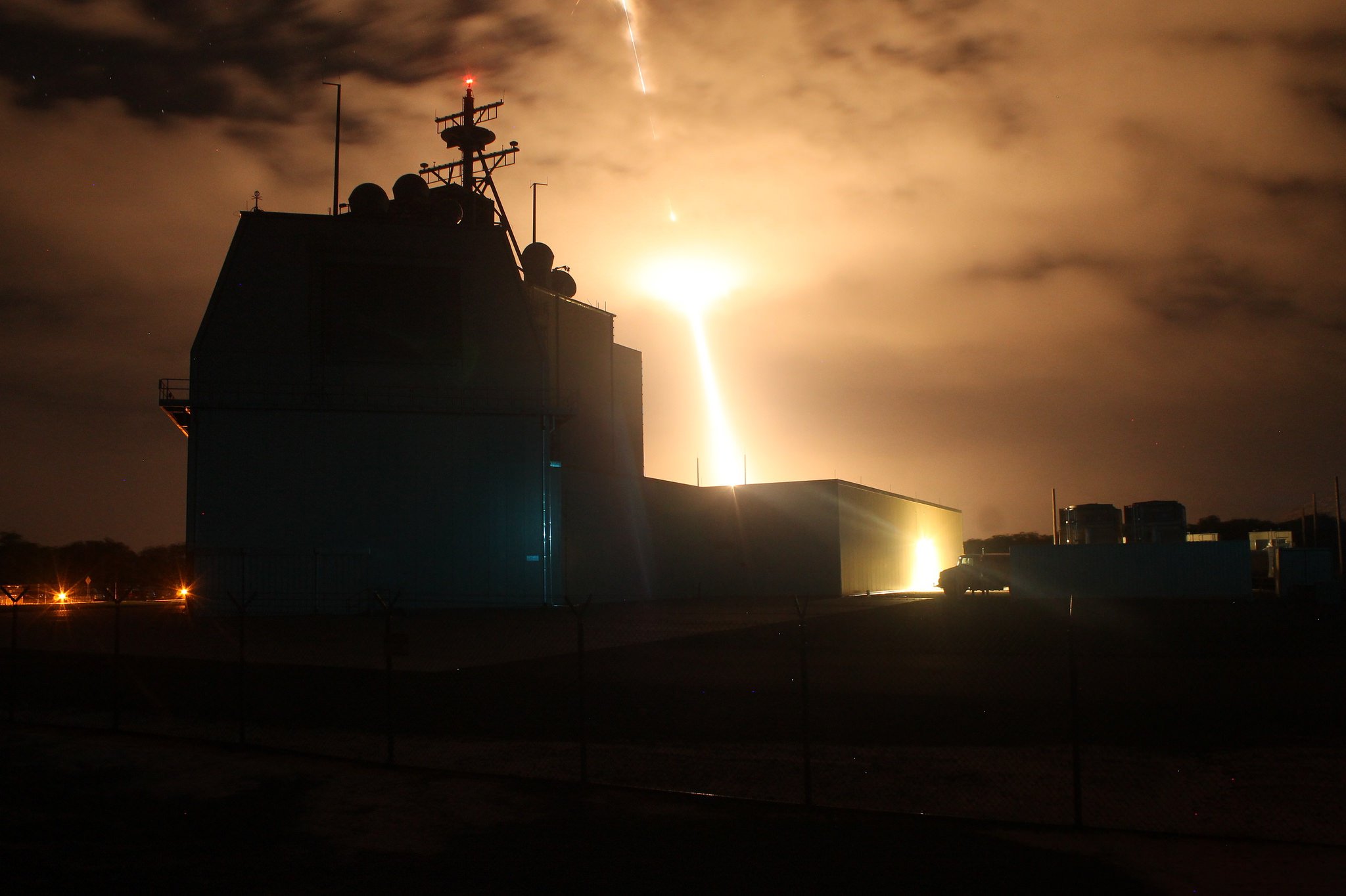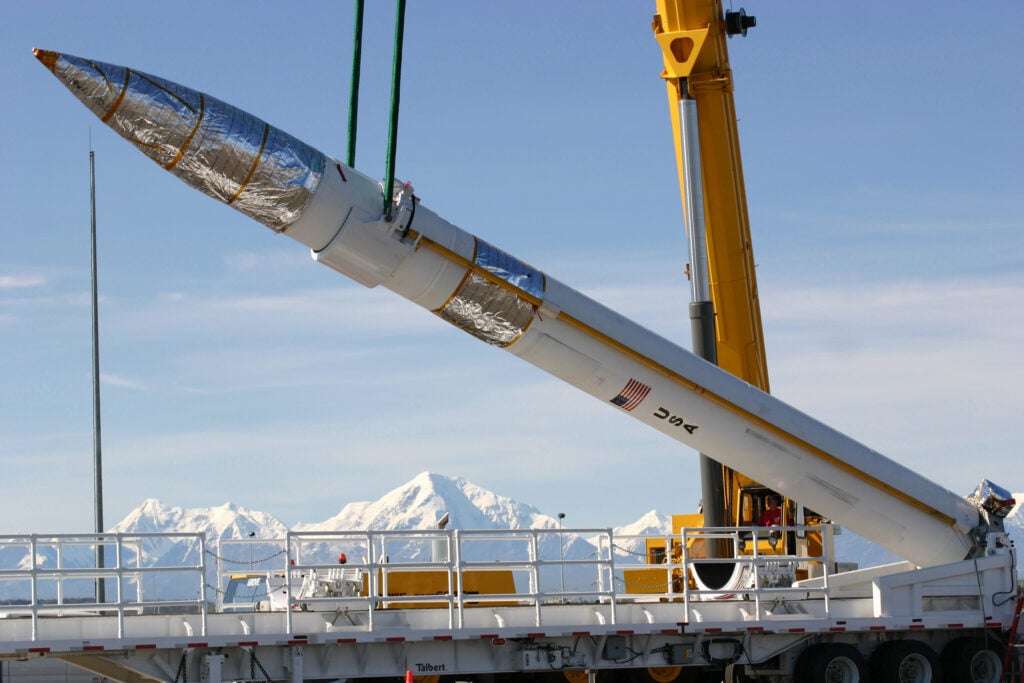
A critical, U.S.-made missile defense system slated to come online in Poland later this year is being delayed, the head of the Missile Defense Agency said on Thursday, and likely won’t be ready until at least 2020.
The Aegis Ashore radar and missile defense complex is seeing “an unsatisfactory rate of construction progress,” Lt. Gen. Samuel Greaves, head of the Missile Defense Agency, told a Senate Armed Services Committee panel. He did not offer more details.
The Pentagon didn’t respond to a request for more information about the delay by press time.

Lt. Gen. Samuel Greaves
None of the handful of senators present at the hearing to assess the state of the country’s missile defense systems followed up on Greaves’ comments, despite increasing concern over Iranian ballistic missile capabilities, and strained ties with Russia, which is also beefing up its cruise and ballistic missile systems.
The delay raises questions about the U.S. European Phased Adaptive Approach, which is intended provide a limited missile defense for the continent. The EPAA includes radar, missile and fire control sites in Romania and Poland; a ballistic missile defense radar in Turkey; and command and control center in Germany. Spain also hosts several U.S. Aegis missile defense destroyers home-ported at Rota. It is not clear what impact the schedule slippage will have on the overall program, or what kinds of costs may be incurred.
The original Aegis site was opened at the Deveselu Air Base in Romania in May 2016, to predictably strenuous Russian objections. The NATO alliance insists that the sites are being built to detect and counter Iranian missiles, contain no offensive capabilities, and couldn’t stop Russia’s massive arsenal of missiles anyway, but Moscow has refused to accept NATO missile sites on former Warsaw Pact territory, calling it a “direct threat.”
“I’m not surprised that there’s a delay,” Kingston Reif of the Arms Control Association told me. But he was surprised by the cause — construction issues. “I was skeptical that the end of 2018 date could be achieved at the planned/desired capability given the problems the Missile Defense Agency has encountered in early testing of the SM3-IIA interceptor that is slated to be deployed in Poland,” he said. “MDA, Poland, and the contractor should be pressed for more information. The Romania site was completed on time as I recall.”
The missile itself has failed two tests in the past year, raising concerns among analysts that the system would not be able to actually hit a North Korean missile headed toward the United States or one of its allies.

A Ground-Based Interceptor is lowered into its missile silo in Alaska.
Missile Defense Review
Appearing alongside Gen. Greaves, Undersecretary of Defense for Policy John Rood was repeatedly pressed by lawmakers to estimate when the eagerly anticipated Missile Defense Review will be released. Originally, it was expected to be briefed to the Hill and be released to the public around the same time as the Nuclear Posture Review in February, but the changes in the focus of the report have led to delays. It was broadened to look at all missile defense, not just its original focus on ballistic missile defense.
Rood was not willing to commit to having the review completed by April, saying it should wrap up in “the next couple of months.” He said internal disagreements have led to a longer gestation time than the nuclear review.
One of the hangups has been the expansion of the scope of the review from looking at rogue regimes like Iran and North Korea to including Russia and China, in keeping with the Pentagon’s new focus on great power competition.

John Rood
In the omnibus spending bill passed by Congress Thursday, lawmakers finally pushed through the $700 billion fiscal 2018 Defense Department budget, six months after the start of the fiscal year. The bill boost missile defense spending by $3.3 billion over fiscal 2017, and $1.6 billion more than the Missile Defense Agency requested for 2018, pushing MDA’s total to $11.5 billion this year.
The omnibus also incorporated the National Defense Authorization Act’s provisions for $960 million for additional THAAD and AEGIS interceptors, and $568 million to expand the number of missile interceptors at Fort Greely, Alaska, from 44 to 64. Congress also added $558 million to the MDA’s original request to fund a slew of Israeli programs, including Iron Dome and the Arrow 3 missile defense system, more than tripling funding to a total of $706 million overall.
Appropriators also decided to tack on an additional $165 million for even more THAAD interceptors, bumping the budget for THAAD this year to $617 million. When it comes to SM-3 Block 1B missiles, Congress added $178 million above the fiscal ’18 request, for a total of $632 million.
Norway’s air defense priorities: Volume first, then long-range capabilities
“We need to increase spending in simple systems that we need a huge volume of that can, basically, counter very low-tech drones that could pose a threat,” Norway’s top officer told Breaking Defense, “so we don’t end up using the most sophisticated missile systems against something that is very cheap to buy.”


























